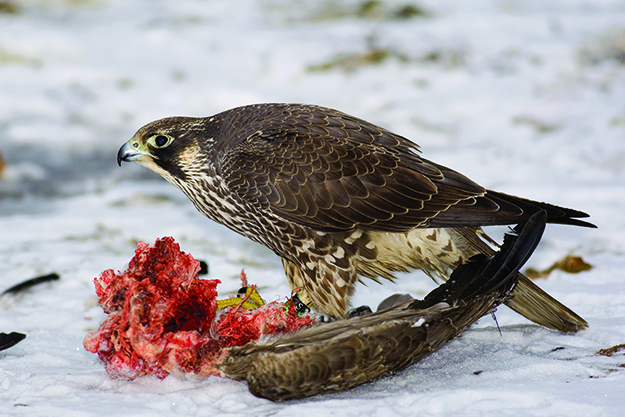By Gauri Sreenivasan, Nature Canada’s Director of Policy and Campaigns –
Let’s face it: we wish there was no need to mark Endangered Species Day. Unfortunately, for now the trends seem to indicate otherwise. In Canada, half of all monitored species have declined (see WWF-Canada’s Living Planet Report ) in Canada since the 1970s, many of them by more than 80 percent. In BC’s central interior that includes species like the Peregrine falcon, white sturgeon, and the mountain caribou.

It’s our responsibility to make sure these species continue to thrive, for the health of the planet and for our children and grandchildren. But nature is under threat, and it’s time for us to act. With this urgency, Nature Canada and more than 20 environmental organizations across the country launched Make Room for Nature in 2019.
The campaign is a collaborative call to action for all Canadians. Together, we support – and when necessary, pressure – the Canadian government to meet its commitment to protect 17 percent of land and 10 percent of marine areas by the end of 2020, and a full 25 percent by 2025.
The campaign is urging the government to take an international leadership role in protecting even more nature. This means moving beyond 25 percent by 2025 to 30 by 2030 and 50 by 2050. Canada’s wilderness is vast. Protecting more of it will reduce habitat loss and give populations of endangered species the chance to recover and adapt to the changing climate.
The Make Room for Nature campaign also underscores that Canada’s efforts to protect biodiversity and avert species loss can only be achieved if we support and elevate Indigenous-led conservation. First Nations communities have a close relationship with their traditional territories, and their stewardship efforts and traditional knowledge are an invaluable part of the solution moving forward.
Of course, British Columbia has already seen establishment of important new Indigenous Protected and Conserved Areas (IPCA). These include Qat’muk in the Purcell Mountains west of Invermere. The creation of this IPCA recognizes the Ktunaxa Nation as stewards of the land who will continue to conserve the park in partnership with provincial and national partners and in accordance with their own laws and rights. Recognition of Indigenous rights and governance in this way can makean important contribution towards reconciliation goals.
We all need nature, regardless of our occupation, our political beliefs, or our age—for wellbeing, for clean air and water, and for support to diverse livelihoods. Fortunately, we can each play a role in protecting nature. Whether it’s writing a letter to your MP about protected area targets, working with neighbours to improve backyard habitat for endangered species, or organizing a lunchtime nature walk at the office, you can make a difference. Nature is our home, and protecting it is our responsibility.
To learn more, visit www.makeroomfornature.ca/#home and www.naturecanada.ca/about. -GG
Nature Canada is one of the oldest national nature conservation charities in Canada. For 80 years, Nature Canada has helped protect over 110 million acres of parks and wildlife areas in Canada and countless species. Today, Nature Canada represents a network of over 100,000 members and supporters, and more than 800 nature organizations.

